Foodscaping is a creative and practical way to integrate edible plants into your landscape, combining beauty with homegrown abundance. By strategically incorporating fruits, vegetables, and herbs alongside flowers and decorative plants, you can design a visually striking garden that also provides fresh, organic food.
This guide will walk you through the essentials of foodscaping, from layout ideas and plant pairings to sustainable gardening techniques, helping you turn your outdoor space into a thriving, edible oasis!
Plus, I have created a free PDF printable planner to help you create your very own stunning foodscaping design! So don’t forget to grab it at the end of this post!
Transforming your outdoor space into a stunning and productive edible landscape is not only a rewarding endeavor but also a growing trend known as foodscaping. In this guide, I will be discussing the art of foodscaping, exploring how you can blend functionality and aesthetics to create a harmonious garden that not only looks beautiful, but also provides a bountiful harvest of delicious fruits, vegetables, and herbs.
From planning and plant selection to maintenance tips and sustainable practices, this guide will equip you with the knowledge and inspiration to help you plan your own stunning foodscaping garden!
This is a pinnable post. Tap or hover over any image in this post to pin to your Pinterest Boards.
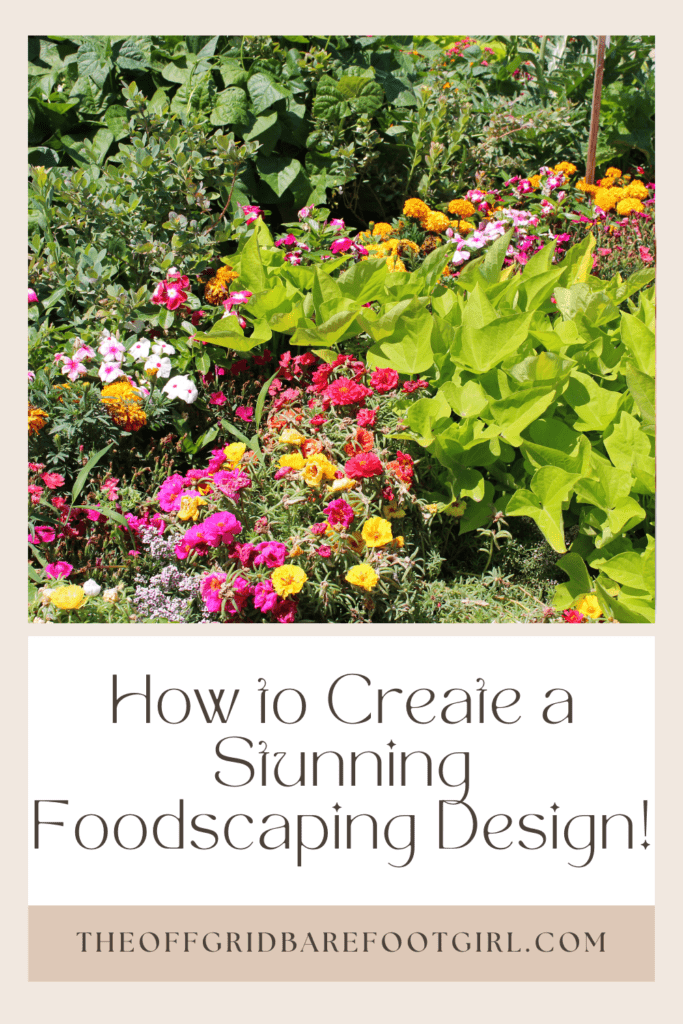
Introduction to Foodscaping
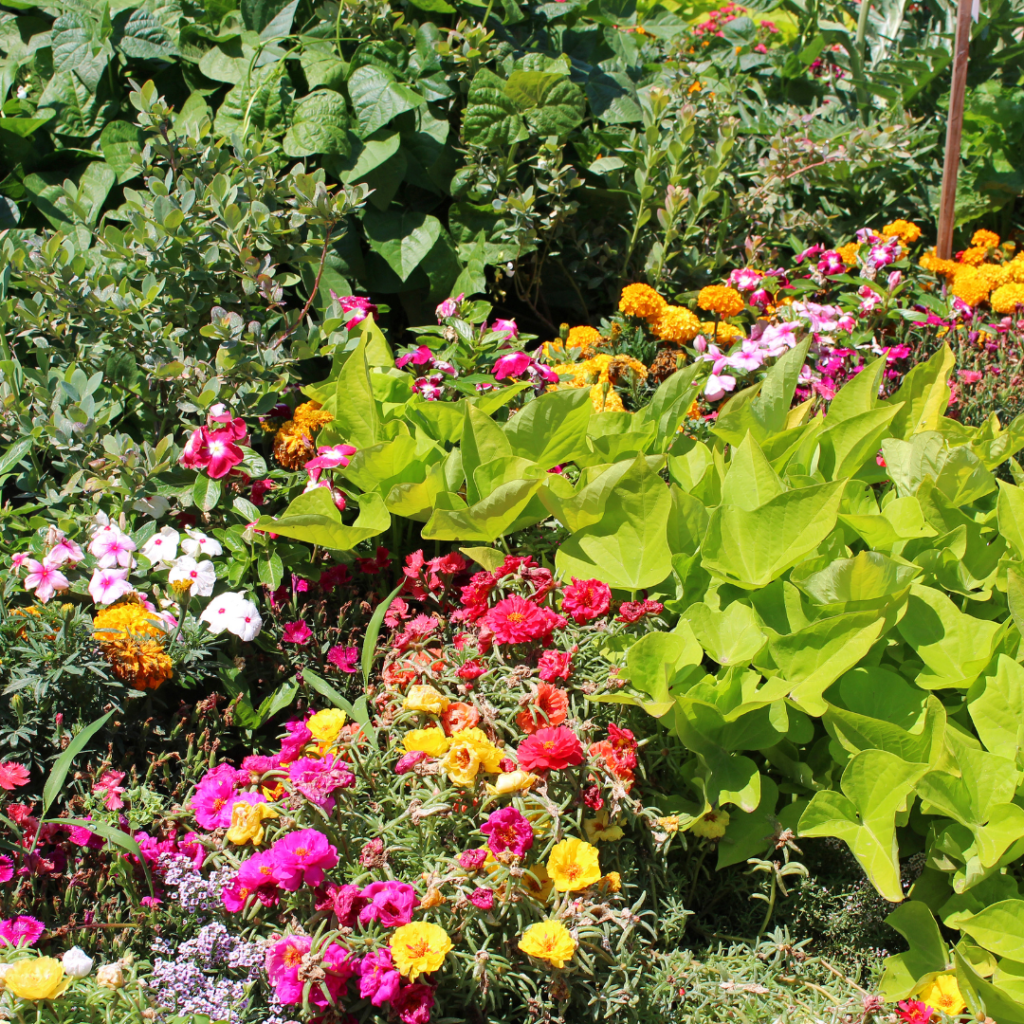
What is Foodscaping?
Foodscape, a delightful marriage of landscaping and agriculture, transforms traditional yards into bountiful edible landscapes. Picture your garden bursting with a vibrant tapestry of fruits, vegetables, and herbs, seamlessly blending with ornamental plants to create a visual feast for the eyes and a culinary haven for the palate.
From colorful peppers lining flower beds to fragrant herbs intermingling with ornamental shrubs, every inch of space is thoughtfully utilized to yield both beauty and bounty!
Embrace the concept of foodscaping as more than just a garden, but as a sustainable lifestyle choice, where growing your own food becomes an integral part of everyday living, fostering a deeper connection to the land and the nourishment it provides.
Benefits of Foodscaping
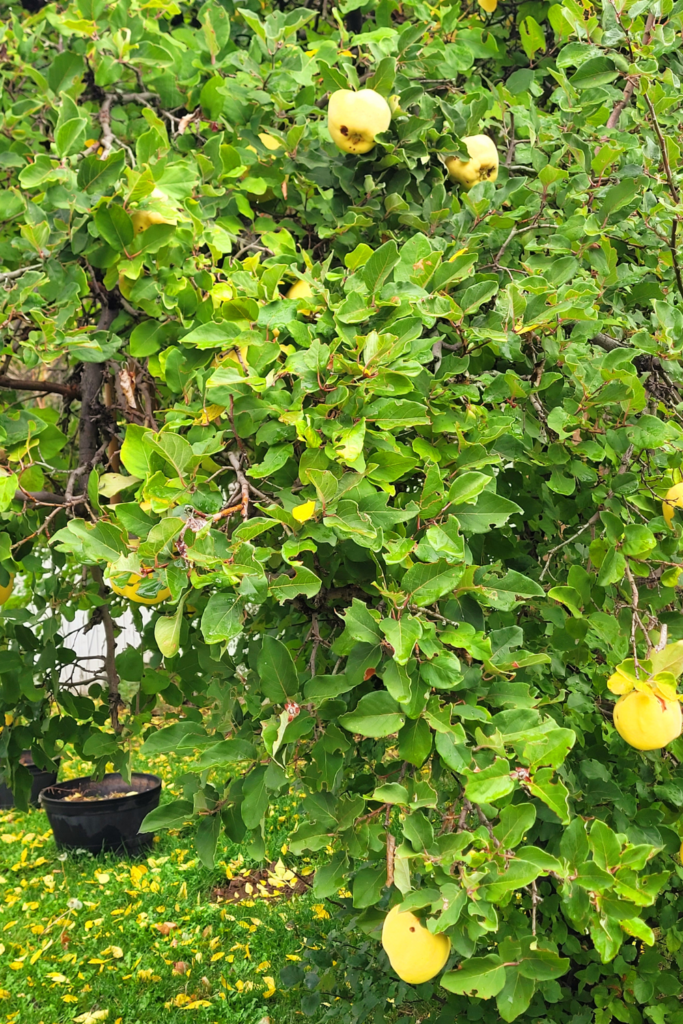
Experience the myriad benefits of foodscaping, where the beauty of landscaping meets the practicality of agriculture in a harmonious union. Imagine strolling through your garden bursting with a vibrant array of fruits, vegetables, and herbs, each plant not only pleasing to the eye but also tantalizing to the taste buds.
With foodscaping, you not only enhance the aesthetic appeal of your outdoor space but also reap the rewards of homegrown, organic produce at your fingertips. Embrace the joy of cultivating your own food, reducing reliance on store-bought produce while enjoying the freshness and flavor of just-picked harvests.
Also, foodscaping promotes sustainability by minimizing food miles, reducing carbon footprint, and fostering a deeper connection to nature. From enhancing biodiversity to promoting healthy eating habits, foodscaping offers a plethora of benefits for both the environment and your well-being, making it a rewarding and fulfilling endeavor for any gardener.
Planning Your Foodscaping Design
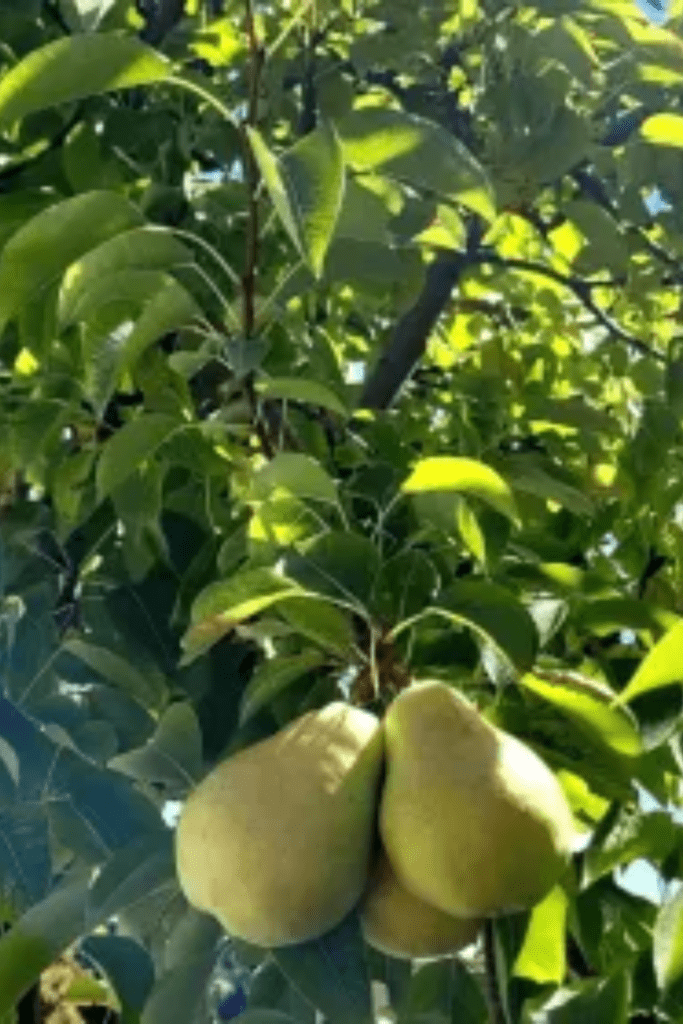
I want to discuss ideas for planning your foodscaping design, where creativity meets practicality in a delightful harmony of form and function. Visualize your outdoor space transformed into a lush oasis teeming with a bounty of edible delights, from vibrant vegetables to fragrant herbs and luscious fruits. Consider the layout of your garden, envisioning pathways lined with culinary treasures and beds brimming with a colorful tapestry of edible plants!
Take into account factors such as sunlight, soil quality, and water access to ensure optimal growing conditions for your crops. With careful consideration and attention to detail, craft a design that not only pleases the eye but also serves as a sustainable source of nourishment for you and your loved ones.
Planning your design is an exhilarating step towards creating a thriving edible landscape that delights the senses and nourishes the soul.
Foodscaping in HOA Zones and Producing Your Own Food!

Are you stuck in an HOA (Homeowners Association) with gardening restrictions? Unlock the potential of foodscaping to grow vegetables even in HOA zones, transforming your outdoor space into a beautiful and productive oasis that complies with regulations.
Embrace the creativity of blending edible plants with ornamentals, weaving them seamlessly into your landscape to create an aesthetically pleasing yet functional garden. Begin by familiarizing yourself with the HOA guidelines regarding landscaping and gardening, ensuring compliance while maximizing the use of your space.
Incorporate raised beds, container gardens, or vertical gardening techniques to grow vegetables discreetly within the confines of your property. Choose compact varieties of vegetables that lend themselves well to container gardening and are visually appealing, such as colorful peppers or trailing cherry tomatoes.
By integrating foodscaping principles with HOA regulations, you can enjoy the satisfaction of harvesting fresh produce while maintaining the beauty and harmony of your neighborhood landscape.
Here is a summary checklist.
Creative Foodscaping: Growing a Beautiful, Productive Garden Within HOA Guidelines
- Maximize space: Grow vegetables within HOA guidelines using foodscaping techniques.
- Blend beauty and function: Combine edible plants with ornamental plants to create a visually appealing garden.
- Know the rules: Familiarize yourself with your HOA’s landscaping and gardening regulations.
- Use discreet gardening methods: Incorporate raised beds, container gardens, or vertical gardens.
- Choose compact, attractive varieties: Opt for visually pleasing vegetables like colorful peppers or cherry tomatoes.
- Maintain harmony: Enjoy fresh produce while preserving the beauty and aesthetic of your neighborhood.
Hiding Vegetable Plants Within Flowers and Herbs
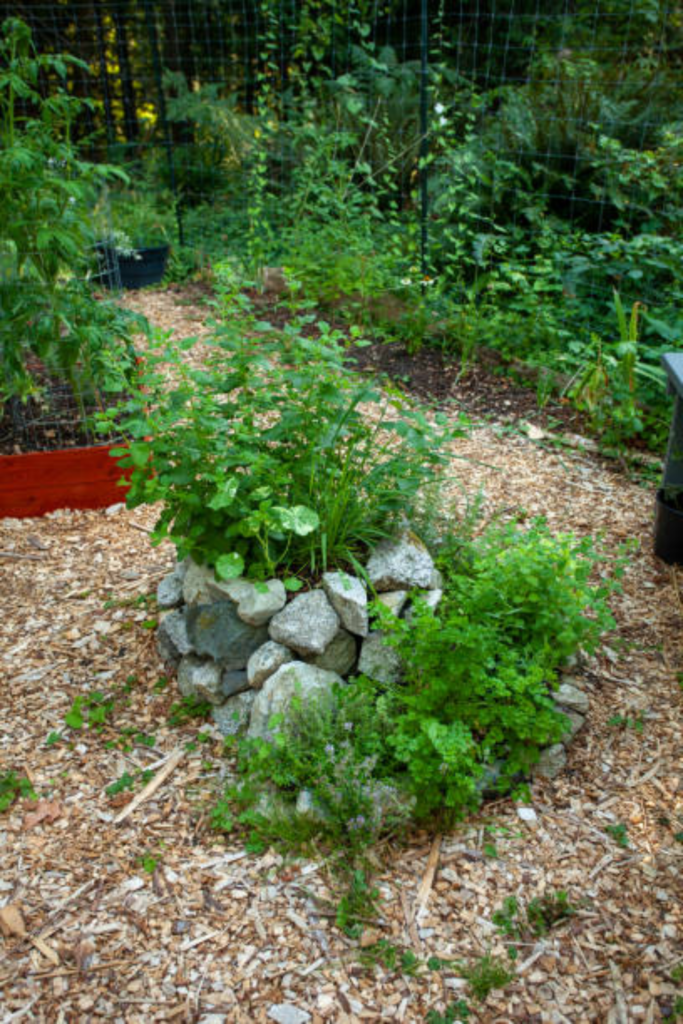
You can grow vegetable plants among ornamental plants in your yard to create a gorgeous edible landscape. Your garden can produce a ton of vegetables and herbs with a mix of beautiful flowers. Grow a showstopping display that could win you the yard of the year and an unlimited supply of homegrown food! Plus, there are a lot of flavorful edible flowers like nasturtiums that offer a peppery taste and pops of color on your salad plate!
It is easy to hide vegetable plants within a flower garden and nobody would ever know you are mass-producing your home-grown food! When you migrate your vegetable plants to your prized perennial flower beds, your garden will fill with lush edible greenery with hidden gems of fruit and vegetables within patches of flowers. The best part is that the flowers naturally attract pollinators to the vegetable plants!
When you grow beautiful perennial flowers, you can sneak in several vegetable plants to grow your food. By adding ground-covering crops like squash within your perennial flower bed, you will be amazed at the gorgeous squash flowers that will intermingle with the perennial flowers knowing that you are growing your own food! One simple way to do this is by growing a cottage garden.
Here is a summary checklist.
Transform Your Yard with a Stunning Edible Landscape: Blending Vegetables and Ornamental Flowers
- Create a gorgeous edible landscape: Grow vegetables alongside ornamental plants for a stunning garden that produces food.
- Blend beauty with function: Mix vibrant flowers with vegetables and herbs to add color and flavor to your garden.
- Hide vegetables in flower beds: Disguise vegetable plants within perennial flower beds for a discreet, productive garden.
- Attract pollinators naturally: Flowers will draw pollinators to your vegetable plants, boosting growth.
- Grow with ground cover crops: Incorporate crops like squash into perennial beds for a beautiful, food-producing garden.
- Try a cottage garden style: Use this classic approach to mix vegetables with flowers and create a picturesque, edible landscape.
How to Design a Cottage Garden: Growing a Beautiful Mess
Explore this post in the following link as your ultimate guide to growing perennial flowers for your foodscape garden, setting the stage for the ornamental charm of your culinary oasis. I love cottage gardening because you can effortlessly blend an abundance of vegetable plants amidst a backdrop of vibrant blooms.
With this resource at your fingertips, you’ll discover the perfect balance between beauty and functionality in your foodscape garden, creating a picturesque haven that delights the senses and satisfies the palate.
Here are some helpful posts I have written about how I grow my beautiful flowers that you can grow with your vegetable plants!
- How to Design a Cottage Garden: Growing a Beautiful Mess
- The Ultimate Guide to Growing Your Dream Flower Garden!
What Is a Cottage Garden?
Cottage gardens are informal, fun, whimsical, colorful, beautiful, and practical. They are filled with native flowers, vegetables, herbs, bulbs, annuals, perennials, shrubs, and climbers. They provide dimension and structure to garden spaces and a safe haven for local pollinators.
The best part is that cottage gardens are very much alive and they change year after year on their own if you allow them to do their own thing. With a few bulbs, seeds, and patience, you can design a cottage garden that will fill out your garden spaces naturally and beautifully!
The Benefits of Foodscaping
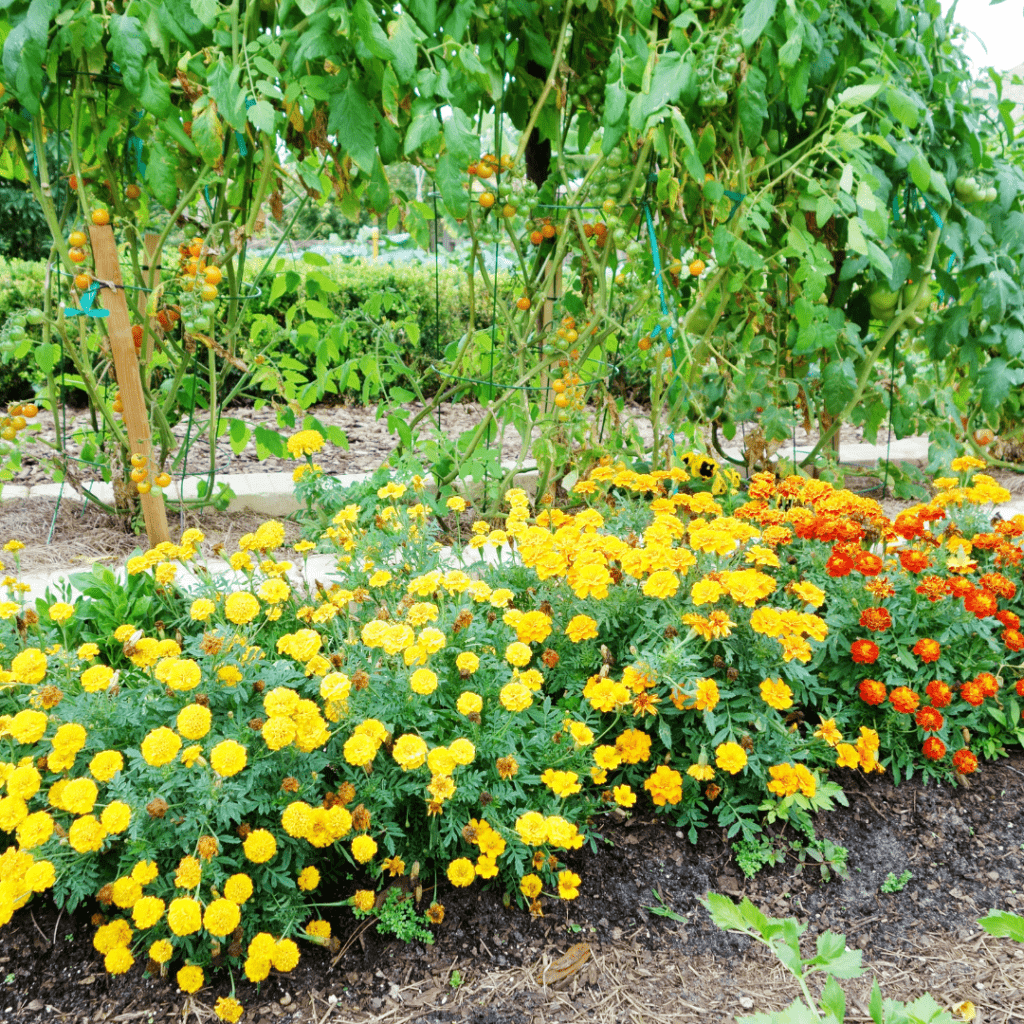
Experience the myriad benefits of foodscaping, where the beauty of landscaping meets the practicality of agriculture in a harmonious union. With foodscaping, you not only enhance the aesthetic appeal of your outdoor space but also reap the rewards of homegrown, organic produce at your fingertips.
Embrace the joy of cultivating your own food, reducing reliance on store-bought produce while enjoying the freshness and flavor of just-picked harvests.
Foodscaping offers a multitude of benefits, including
- Fresh, Organic Produce: By growing your own fruits, vegetables, and herbs, you have access to fresh, nutritious produce right in your backyard, free from harmful pesticides and chemicals.
- Cost Savings: Growing your own food can lead to significant cost savings compared to purchasing produce from grocery stores, especially over time.
- Enhanced Flavor: Homegrown fruits and vegetables often have superior flavor and texture compared to store-bought varieties, providing a more enjoyable culinary experience.
- Improved Nutrition: Incorporating a variety of fruits, vegetables, and herbs into your foodscape ensures a diverse and nutrient-rich diet, promoting overall health and well-being.
- Environmental Sustainability: Foodscaping promotes sustainability by reducing the carbon footprint associated with transporting food from farms to stores. It also encourages practices such as composting and water conservation, contributing to environmental stewardship.
- Aesthetic Appeal: Foodscaping adds beauty and visual interest to your outdoor space, combining the practicality of edible plants with the aesthetic appeal of traditional landscaping.
Growing Foodscaping Gardens Brings Individuals and Communities Together
- Educational Opportunities: Foodscaping provides valuable learning experiences for individuals of all ages, teaching gardening skills, environmental awareness, and the importance of healthy eating habits.
- Community Building: Sharing surplus produce with neighbors and participating in community gardening initiatives fosters connections and strengthens community bonds.
- Emotional Well-being: Gardening has been shown to reduce stress, anxiety, and depression, promoting mental health and overall well-being.
- Self-Sufficiency: Foodscaping empowers individuals to take control of their food supply, promoting self-sufficiency and resilience in times of uncertainty.
Setting Goals for Your Foodscaping Project
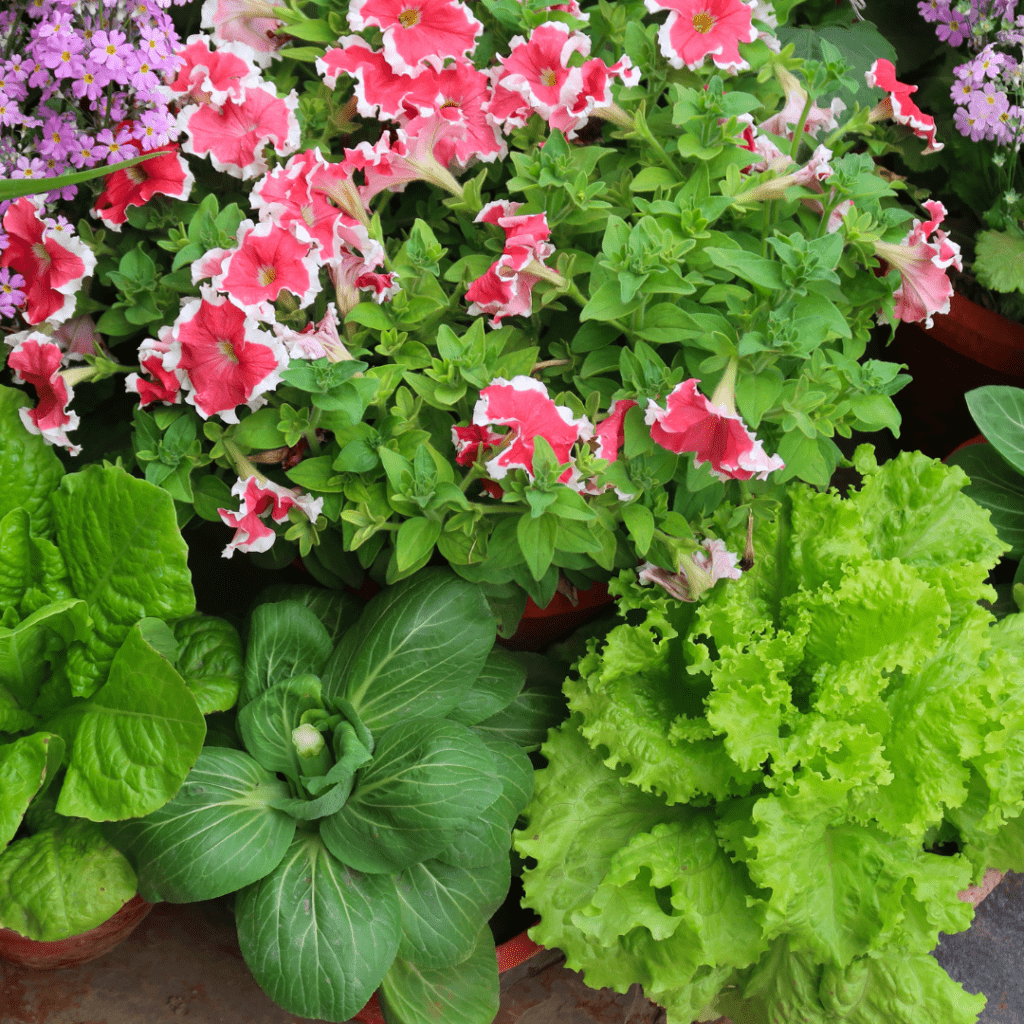
Plan the design of your of foodscaping by setting clear and achievable goals for your project. Picture your dream garden, brimming with vibrant fruits, vegetables, and herbs, thriving in harmony with ornamental plants. Begin by defining your objectives, whether it’s to grow a diverse array of produce for culinary delights, create a visually stunning landscape, or promote sustainability and self-sufficiency. Break down your goals into specific tasks and timelines, setting milestones to track your progress along the way.
Embrace the challenge of learning new gardening techniques and experimenting with different plant varieties to achieve your desired outcomes. With dedication, creativity, and a clear vision in mind, your foodscaping project will flourish into a beautiful and productive oasis!
Selecting the Right Plants for Foodscaping
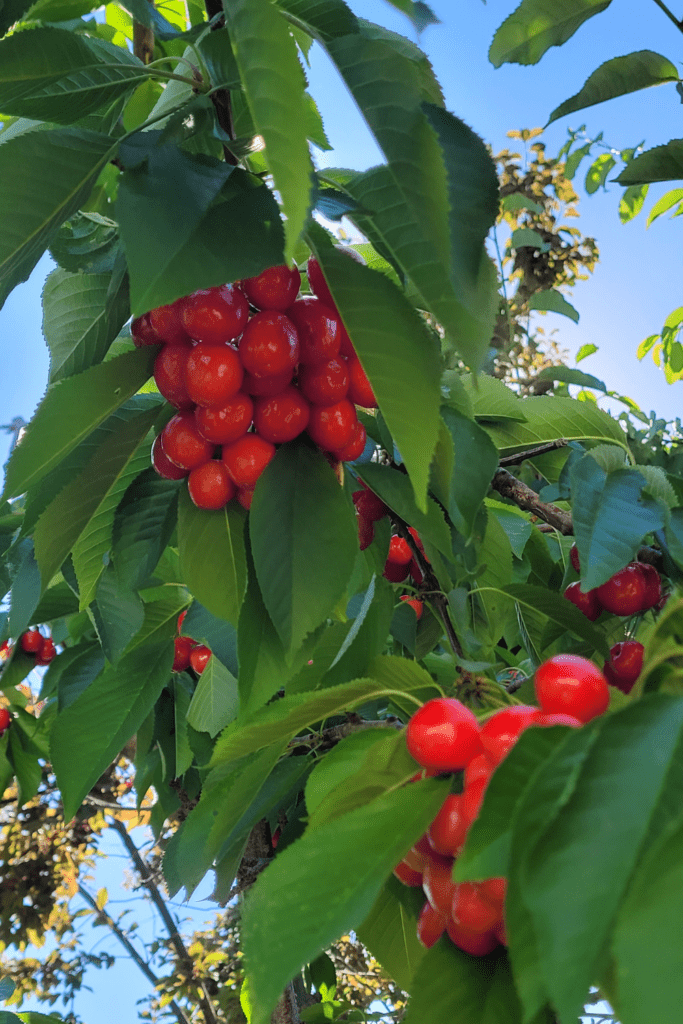
Selecting the right plants for foodscaping is akin to curating a vibrant palette for your culinary canvas. Picture yourself as the discerning artist, carefully choosing each plant to contribute both aesthetic beauty and practicality to your garden. Consider the climate, soil conditions, and available space as you peruse a diverse selection of fruits, vegetables, and herbs. Opt for varieties that not only thrive in your region, but also complement one another in flavor, texture, and growth habits.
Embrace the opportunity to incorporate edible flowers and ornamental plants that add color and interest to your landscape while attracting beneficial pollinators. With thoughtful consideration and a dash of creativity, your foodscaping garden will flourish into a veritable cornucopia of flavors and visual delights, providing nourishment for both body and soul.
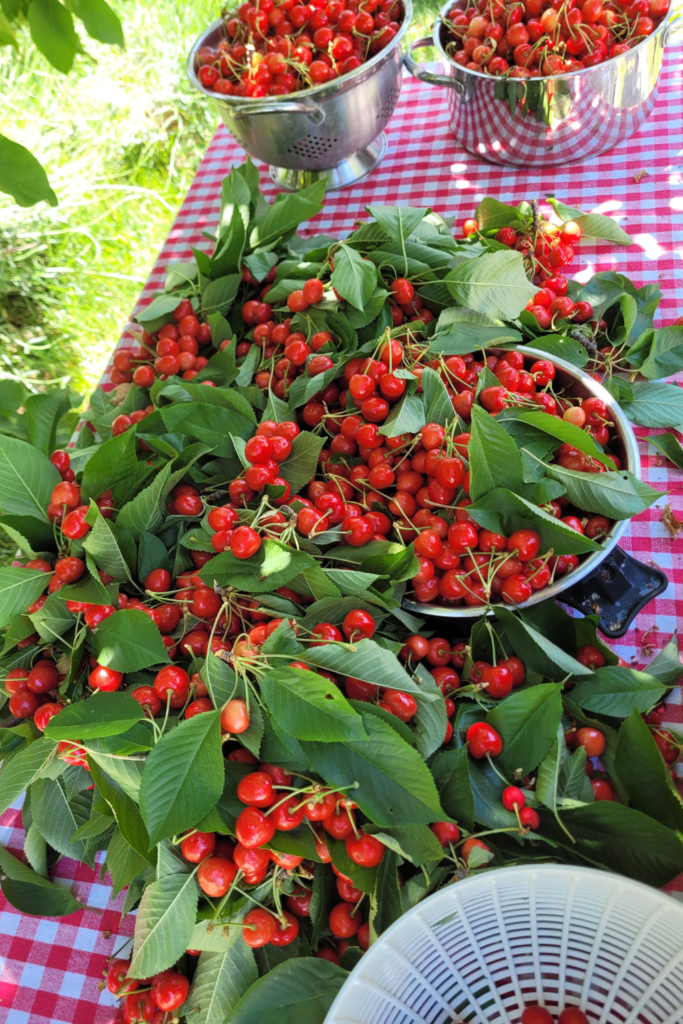
Growing Beautiful Combinations of Edibles and Florals for Foodscaping
- Tomatoes and Marigolds: Marigolds help repel pests that commonly affect tomatoes, while their vibrant blooms add a pop of color to your garden.
- Beans and Nasturtiums: Nasturtiums attract beneficial insects and deter pests, while their edible flowers make a colorful addition to salads.
- Peppers and Lavender: Lavender attracts pollinators and beneficial insects while providing a fragrant backdrop for your pepper plants.
- Cucumbers and Calendula: Calendula flowers attract pollinators and add a splash of color to your garden, while their petals are edible and can be used in salads or as a garnish.
- Lettuce and Alyssum: Alyssum attracts pollinators and beneficial insects, while its delicate blooms provide a charming contrast to the leafy greens of lettuce.
- Eggplant and Cosmos: Cosmos flowers attract pollinators and beneficial insects, while their tall, airy stems create a striking backdrop for the lush foliage of eggplant.
- Radishes and Pansies: Pansies are edible flowers that add a burst of color to salads or desserts, while their cheerful blooms attract pollinators to your radish plants.
- Kale and Sunflowers: Sunflowers provide shade and support for kale plants, while their towering stalks add height and visual interest to your garden.
- Carrots and Chives: Chives attract beneficial insects that prey on carrot pests, while their purple flowers add texture and aroma to your garden.
- Squash and Zinnias: Zinnias attract pollinators and beneficial insects, while their vibrant blooms create a colorful contrast to the sprawling vines of squash plants.
These beautiful combinations not only provide practical benefits such as pest control and pollination but also enhance the visual appeal of your foodscaping garden!
Incorporating Hardscaping Elements to Add Dimension and Structure
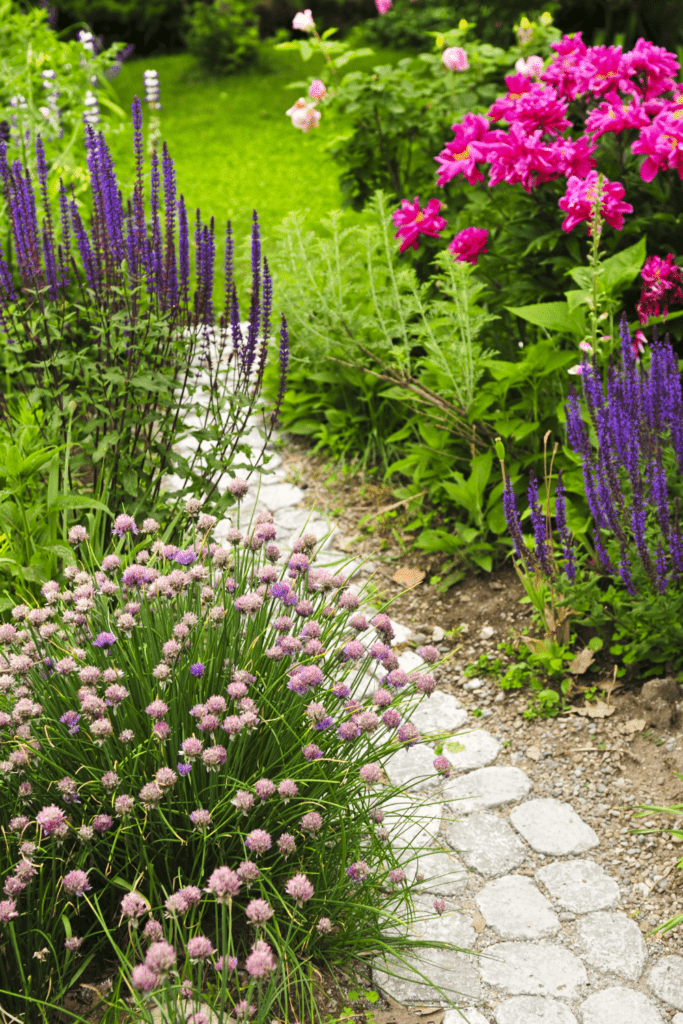
Elevate your foodscaping garden to new heights by incorporating hardscaping elements that add dimension and structure. This helps transform it into a captivating outdoor oasis.
Imagine weaving pathways of rustic stone or weathered brick through lush beds of vegetables and herbs. This helps in guiding visitors on a sensory journey through your culinary landscape. Intersperse raised beds or container gardens crafted from reclaimed wood or galvanized metal. This will help create focal points that anchor the space and provide a platform for your edible treasures to shine.
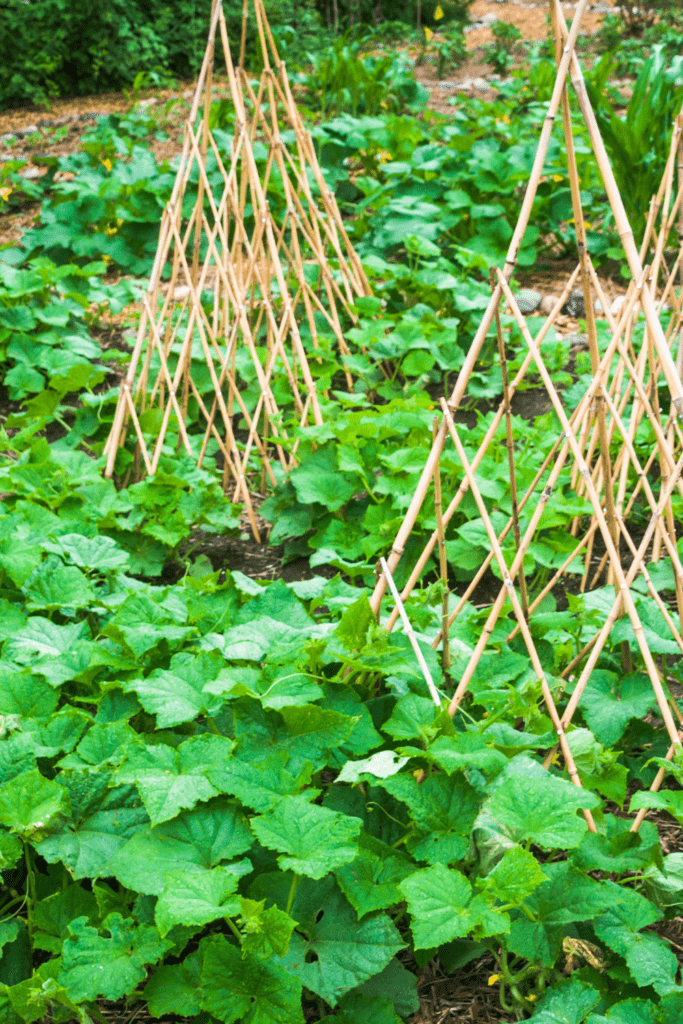
Embrace the versatility of trellises, arbors, and pergolas, offering support for climbing plants like beans, cucumbers, and grapes. This will help add vertical interest and architectural flair to your garden.
With each carefully chosen hardscaping element, your foodscaping garden evolves into a harmonious blend of natural beauty and human craftsmanship. This will help invite exploration and delight the senses at every turn.
Maintenance and Care for Foodscaping Gardens
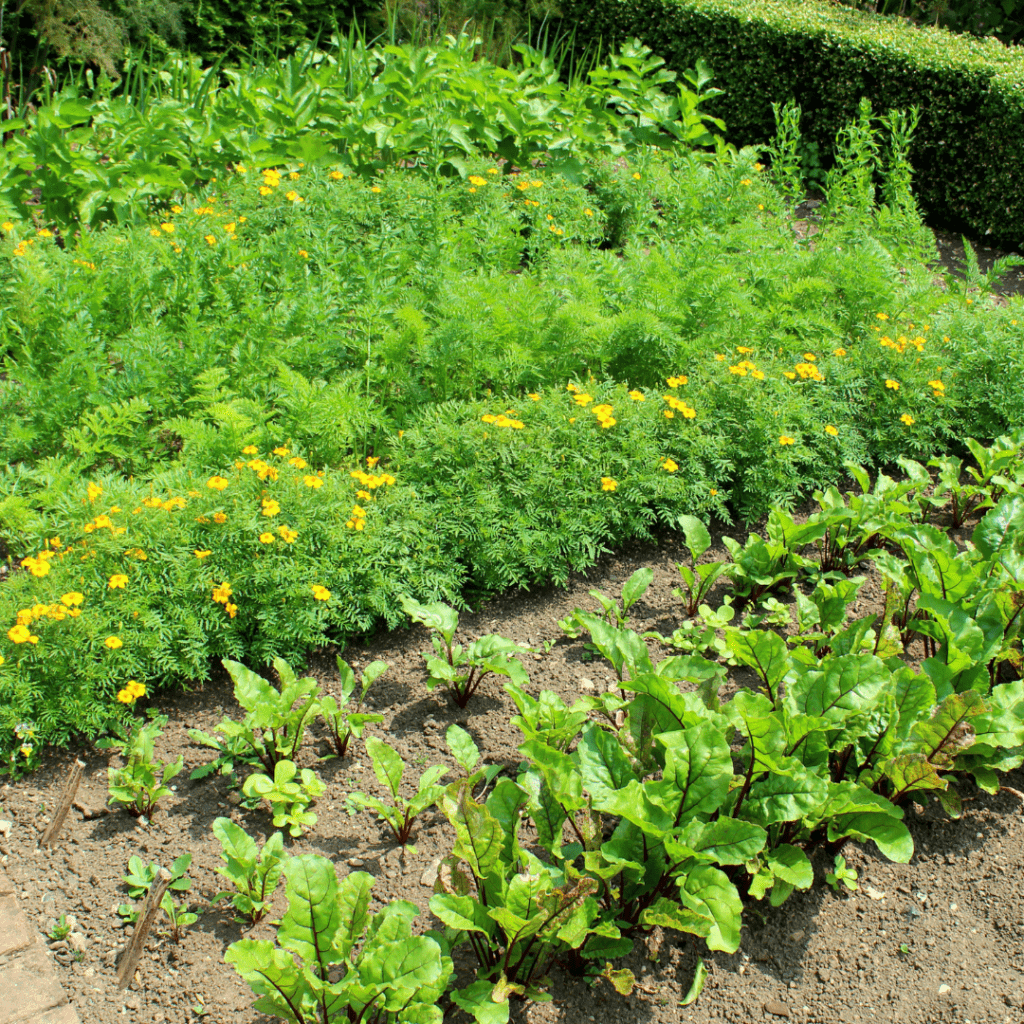
Watering and Fertilizing Tips for Foodscaping Gardens
Watering Tips
Mastering watering and fertilizing techniques is key to nurturing a thriving foodscaping garden that bursts with vitality and flavor. Picture yourself as the guardian of a verdant paradise, where every drop of water and dollop of fertilizer is strategically deployed to maximize plant health and productivity.
Embrace the art of watering deeply and infrequently. This allows for the soil to fully absorb moisture while encouraging deep root growth and resilience. Consider implementing drip irrigation systems or soaker hoses to deliver water directly to the roots, minimizing evaporation and water waste.
Fertilizing Tips
When it comes to fertilizing, opt for organic options such as compost, worm castings, or fish emulsion. This helps enrich the soil with essential nutrients while promoting microbial activity and soil health.
Taking Into Consideration of Changing Seasons
Embrace the rhythm of the seasons, adjusting your watering and fertilizing regimen to meet the changing needs of your plants as they grow and flourish. With attentive care and a touch of green-thumb intuition, your foodscaping garden will thrive. You will be rewarded with a bountiful harvest of homegrown goodness.
Here are some helpful informative posts I have written that you may find useful to help improve your garden soil.
- Compost or Fertilizer: Dirty Secrets of Which Is Better?
- How to Start Composting for the Garden: A Step-by-Step Guide
- The Ultimate Guide to Composting in Your Suburban Backyard
- How to DIY a Milk Jug Drip Irrigation System!
Pest and Disease Management for Foodscaping Gardens
Pest Patrol
In the vibrant tapestry of your foodscaping garden, pest and disease management plays a vital role in ensuring the health and vitality of your plants. Picture yourself as a vigilant guardian, armed with knowledge and proactive strategies to defend against unwanted invaders.
Learn integrated pest management techniques, such as companion planting, crop rotation, and natural predators. This will keep pest populations in check while minimizing the need for chemical interventions.
Disease Watch
Stay vigilant for early signs of disease, such as yellowing leaves or powdery mildew, and take swift action to address the underlying issues. You can do this through proper sanitation, pruning, and the use of organic fungicides or insecticidal soaps when necessary.
Creating a Welcoming Ecosystem
Cultivate a resilient ecosystem in your foodscaping garden. A place where beneficial insects and beneficial microorganisms thrive alongside your edible plants that create a balanced and harmonious environment that fosters health and abundance.
Here are some helpful posts you may find useful in keeping your foodscape garden healthy!
- How to Release Ladybugs In Your Garden for Organic Pest Control
- The Best Garden Snail Control Strategies
- The Best Tips for Organic Gardening
- How to Effectively Combat Powdery Mildew in Your Garden
- How to Grow Marigolds As Pest Control In Your Vegetable Garden
Incorporating Sustainable Practices in Foodscaping
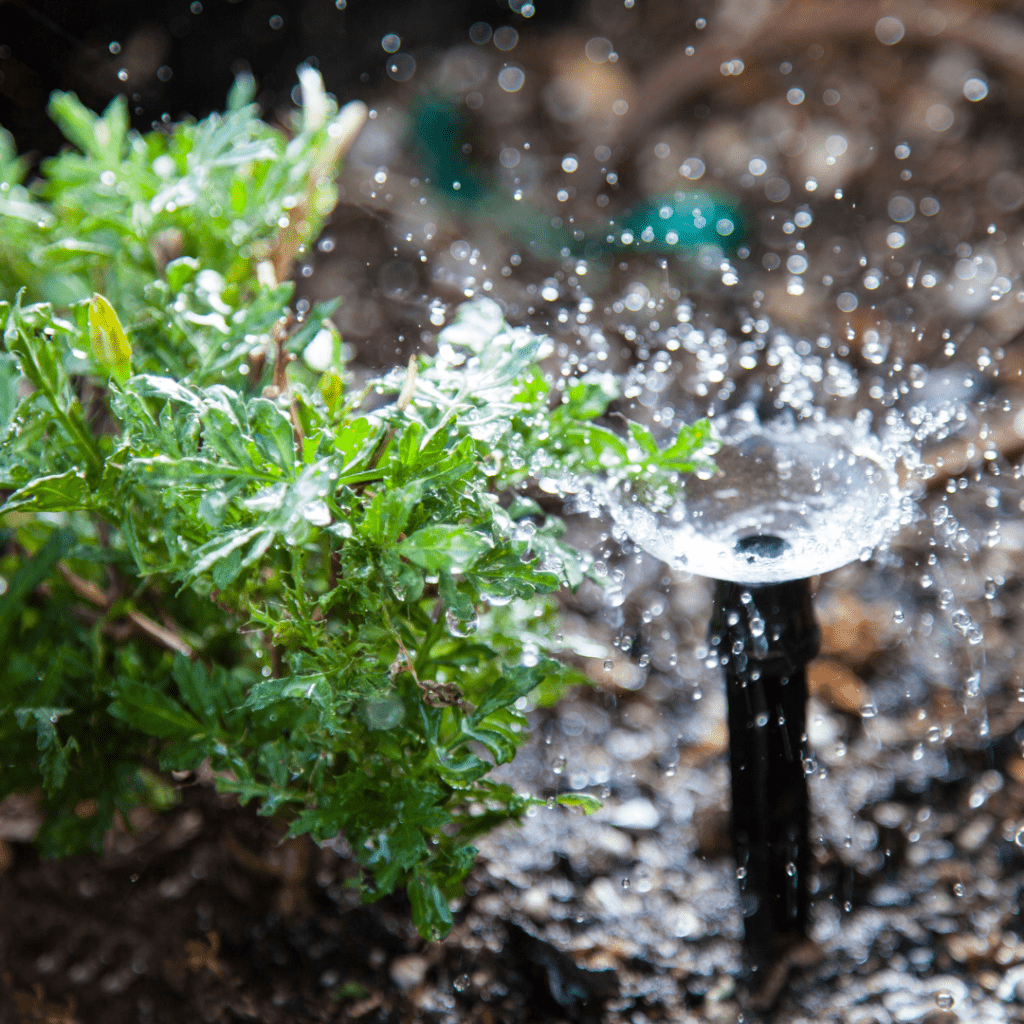
Water Conservation Techniques for Foodscaping Gardens
In the dynamic realm of foodscaping, water conservation techniques stand as essential pillars of sustainable gardening practices. Envision yourself as a steward of the earth, harnessing innovative strategies to optimize water usage and minimize waste in your garden oasis.
Mulching
Adopt the art of mulching, covering the soil with a protective layer of organic materials like straw or wood chips. This will help to retain moisture, suppress weeds, and regulate soil temperature.
Drip Irrigation Systems
Embrace the efficiency of drip irrigation systems or soaker hoses, delivering water directly to the roots of your plants while reducing evaporation and runoff.
Planting Drought-Tolerant Plants
Embrace the principle of the right plant in the right place, selecting drought-tolerant varieties suited to your climate and soil conditions to minimize water needs. For further information on drought-tolerant plants, visit my other post for inspiration.
The Best Drought-Tolerant Plants to Include in Your Survival Garden!
Creating a Resilient and Sustainable Foodscaping Garden
With each mindful action, you cultivate a resilient foodscaping garden that thrives on minimal water input. This helps embody the harmony between human cultivation and natural ecosystems for a sustainable and abundant future.
I have written helpful posts on how you can maintain sustainable practices in your foodscaping garden.
- Why Cedar Mulch Is The Perfect Natural Weed Barrier
- How to DIY a Milk Jug Drip Irrigation System!
- The Best Drought-Tolerant Plants to Include in Your Survival Garden!
I Grow My Own Foodscaping Oasis!
Nestled within my cozy cottage homestead, adorned with a charming brick house, thrives an abundant orchard teeming with fruit, vegetables, herbs, and flowers (my cozy home!) Eager to enrich my surroundings, I’ve been cultivating a stunning foodscape garden in my backyard, brimming with herbs, perennials, ornamentals, and vegetables.
Year after year, these resilient plants return, flourishing with renewed vigor. Each year they fill the spaces with lush greenery and vibrant blooms along with organic food. Witnessing the garden transforming into a lush oasis of color and flavor brings me endless joy and satisfaction!
Growing My Backyard Foodscape Orchard Garden
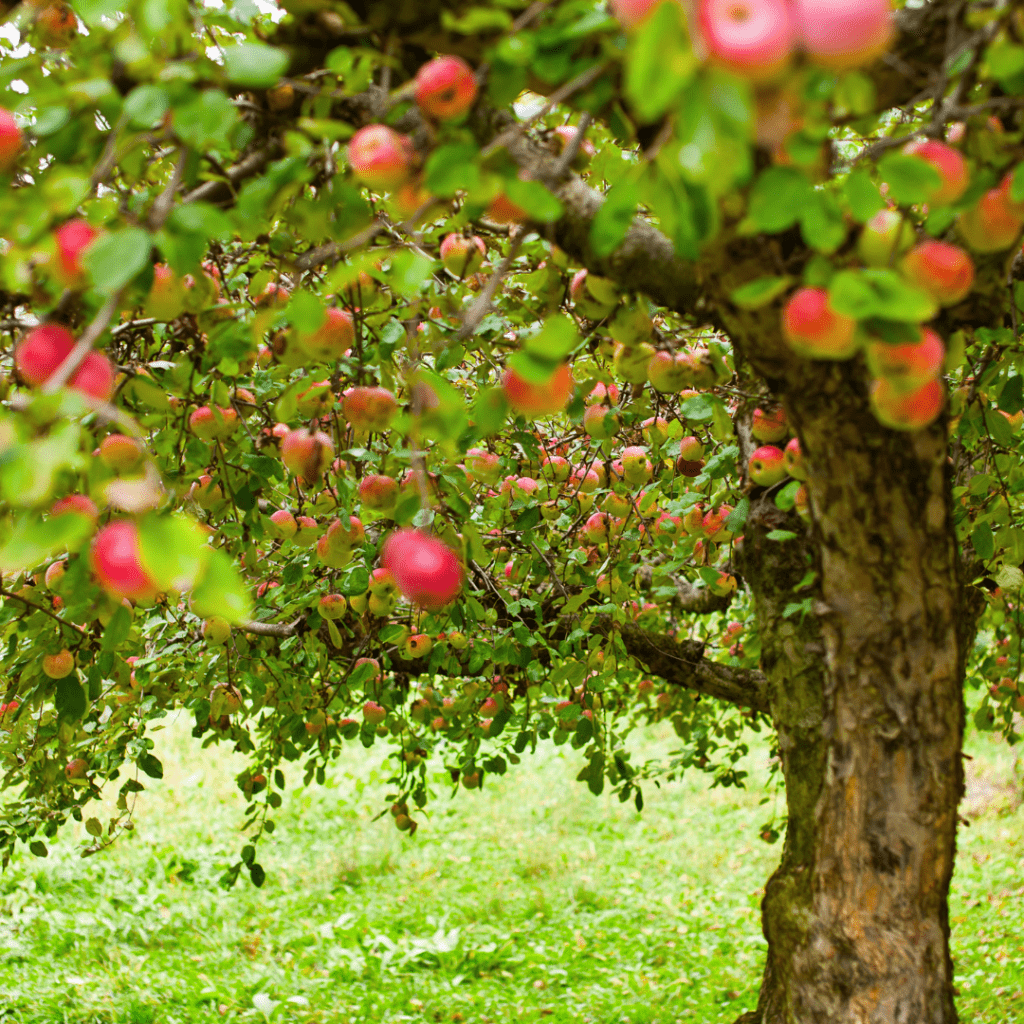
Within my backyard foodscape orchard, I’ve meticulously arranged four fruit tree guilds in a single row. These guilds boast an apple tree, a quince tree, a cherry tree, and a pear tree, each contributing its unique charm and bounty to the landscape with fruit. Let’s go deeper into the intricacies of each guild and explore the diverse array of plants thriving in their midst.
Edible landscape, food forest, food guild, foodscape garden, micro-orchard, whatever you want to call it, starting with a single small row of a variety of different fruit trees is the best way to get started in growing a foodscape garden.
In another post, I discuss more about the compelling reasons why you should consider starting micro-orcharding in your backyard. Discover how establishing a micro-orchard can revolutionize your approach to food cultivation, yielding an abundance of fresh produce while enhancing the beauty of your landscape. With just a handful of fruit trees and herb bushes, you can get started on creating your own foodscape garden, ensuring a sustainable and bountiful harvest for years to come!
Why You Need to Start Micro-Orcharding in Your Backyard
You might be wondering, what exactly is a micro-orchard? Let me tell you about mine. A micro-orchard is akin to having your own mini-paradise tucked away in your backyard (mine is along my fenceline). It’s essentially a compact orchard featuring just a few fruit trees. Now, before you envision endless rows of towering apple trees, hold onto your hat!
A micro-orchard occupies minimal space and can easily thrive in a city garden or even on a patio, nestled in containers. These pint-sized orchards not only yield a plethora of delectable fruits but also contribute to a picturesque landscape. This also helps foster biodiversity by drawing in pollinators and helpful insects. With strategic planning and attentive pruning, you can relish the delightful harvests from your very own micro-orchard year-round. It’s like having your own private haven of fruity delights!
Micro-orcharding presents a fantastic opportunity to ramp up your homegrown food production, even in limited spaces. Tailored for suburban and urban dwellings, these miniature orchards empower homeowners to indulge in the joys of orchard ownership. While sprawling acres might not be at your disposal, it’s entirely feasible to cultivate a diverse array of fruit trees, berry bushes, and herbs right in your suburban backyard. How do I know? Because I’m growing one in my own backyard myself!
Introduction to My Fruit Tree Guilds!
Have you ever heard of fruit tree guilds? This is a place where nature’s harmony and abundance converge in a symphony of flavors and colors! A fruit tree guild is not just a collection of trees. It’s a carefully crafted ecosystem designed to mimic the diversity and resilience of a natural forest. A fruit tree guild is a bustling community of plants. Each plant plays a unique role in supporting the health and productivity of the fruit trees at its center.
From dynamic nitrogen fixers and nutrient accumulators to pest-repelling herbs and groundcover companions, every element of the guild contributes to the overall well-being of the orchard. Together, they form a thriving ecosystem. This is a place where plants work in harmony, creating a self-sustaining paradise of delicious fruits and vibrant biodiversity. I would love nothing more than to talk more about the magic of fruit tree guilds and unlock the secrets of sustainable orchard design!
Creating a Food Forest!
So, let’s discuss the enchanting realm of food forests by cultivating multiple fruit tree guilds. Within this verdant sanctuary, nature orchestrates a symphony of growth, yielding a bounty of edible treasures at every turn. Imagine towering trees, lush shrubs, and sprawling groundcovers weaving together in a tapestry of abundance, nurturing a self-sustaining ecosystem.
Rooted in the principles of permaculture, a food forest mirrors the complexity of natural woodlands, fostering a diverse array of plants that thrive in harmony, demanding minimal upkeep while yielding maximal rewards.
In the heart of a food forest, fruit trees, berry bushes, herbs, and veggies dance together, weaving a tapestry of both sustenance and splendor. From the lofty canopy to the bustling groundcovers, each layer hosts a vibrant community of life, providing niches for wildlife and enriching the soil with nitrogen-fixing wonders. By embracing nature’s blueprint rather than conventional methods, food forests beckon us to forge a deeper connection with the earth, fostering sustainability and abundance in a lush, harmonious haven.
A fruit tree guild or food forest bursts with vitality, comprising seven layers of plants, each playing a vital role in the garden’s self-sustaining harmony. These plants form a cohesive network of mutual support within the guild, creating a rich ecosystem teeming with life and abundance.
The 7 Layers of a Permaculture Guild
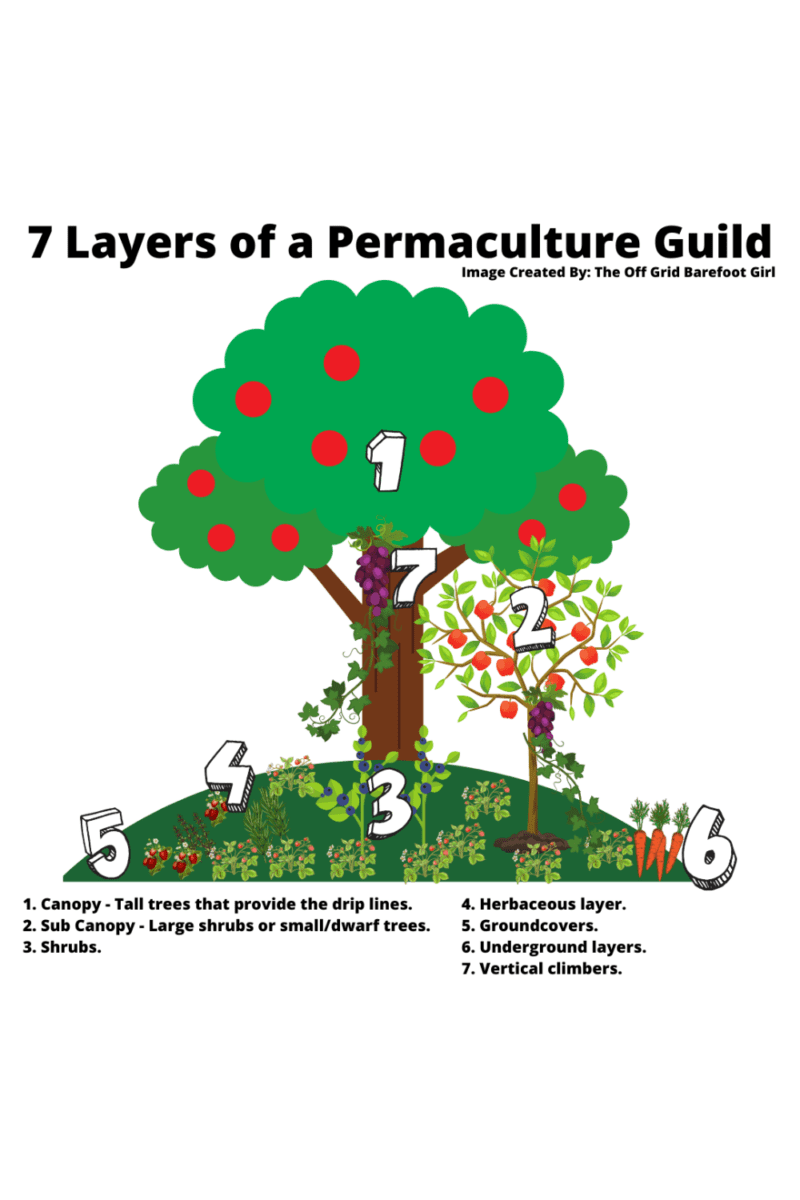
Above, I’ve crafted a vibrant patchwork sketch of a fruit tree guild. I want to talk to you about the popular fruit trees and berry bushes that thrive in backyard settings.
Below are the very ones I’m nurturing myself, and I’ve penned detailed guides on their cultivation and harvests. I have been adding one or two to my orchard each year as necessary.
- Raspberries: How to Grow a Productive Perennial Raspberry Patch
- Strawberries: How to Grow a Productive Perennial Strawberry Patch
- Pears: All About Pear Trees: Ultimate Guide
- Quince: All About Quince Trees: Ultimate Guide
- Cherries: All About Cherry Trees: Ultimate Guide
- Cherry Plums: All About Cherry Plum Trees: Ultimate Guide
- Persimmons: How Persimmon Fruit Trees Can Change Your Life! Unbelievable!
- Apples: All About Apple Trees: Ultimate Guide
- Canopy – Tall trees that provide drip lines.
- Sub Canopy – Large shrubs or small/dwarf trees.
- Shrubs.
- Herbaceous Layer.
- Groundcovers.
- Underground Layers.
- Vertical Climbers.
In my garden, I’ve arranged my fruit tree guilds in a neat row. It is bursting with a vibrant mix of fruit trees, berry bushes, herbs, strawberries, and grapevines. These perennial treasures return year after year. Each year upon their return, they are more abundant than before. They offer a bounty of fruits and herbs for my kitchen. With each harvest, I replenish my pantry with these delightful, free offerings from nature’s bounty.
Transformed by the presence of these delightful and flavorful plants, my fruit tree guilds have evolved into a sprawling backyard foodscape orchard! This abundant oasis serves as the cornerstone of my dream garden. A place where herbs, fruits, vegetables, and flowers intermingle in a harmonious symphony of flavors and colors, all within arm’s reach!
Enjoying an Edible Landscape
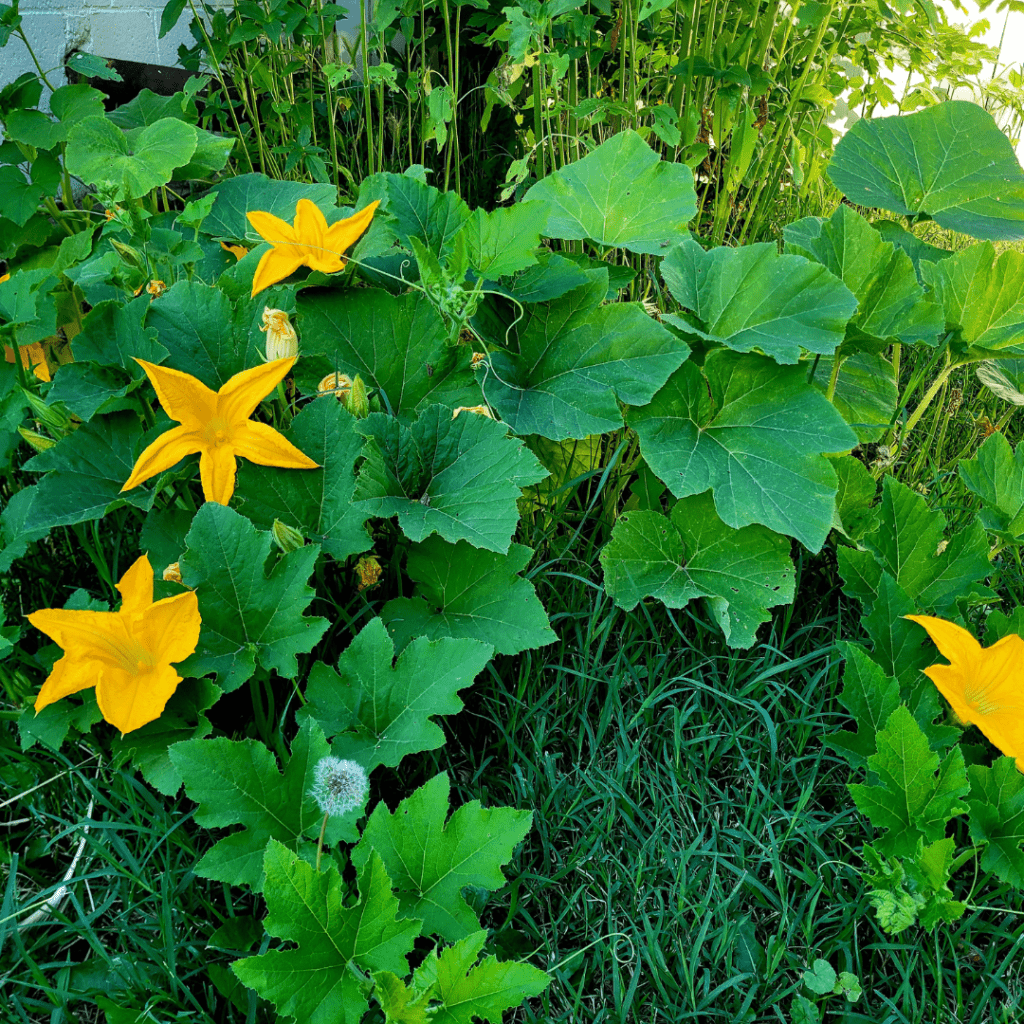
Imagine transforming your outdoor spaces into vibrant edible landscapes, seamlessly blending the allure of traditional gardens with the functionality of growing food. Envision verdant expanses teeming with not only blossoms and bushes, but also a lush bounty of vegetables, fruits, and herbs.
With an edible landscape, your backyard becomes a sanctuary of sustainability, offering the delightful prospect of harvesting ripe tomatoes cascading from trellises or gathering aromatic rosemary for tonight’s culinary masterpiece.
Beyond their visual allure and the satisfaction of reaping your own harvest, edible landscapes provide a myriad of advantages. They foster self-reliance by diminishing dependence on store-bought groceries, guaranteeing a constant stream of fresh, organic fare for your meals.
They also foster biodiversity by enticing beneficial insects such as bees and butterflies, bolstering the intricate harmony of nature. With an edible landscape, gardening transforms into a pleasurable pursuit that delights both the senses and the palate!
Conclusion
In conclusion, setting out on the journey of growing a foodscaping garden is an enriching and rewarding endeavor that transcends mere gardening. It’s a testament to our connection with the land, a celebration of sustainability, and a commitment to nourishing both body and soul. As we cultivate our own oasis of edible delights, we not only savor the fruits of our labor but also contribute to a healthier, more resilient ecosystem.
With each harvest, we forge a deeper bond with nature, embracing the rhythm of the seasons and reveling in the abundance of our bountiful harvests. In the embrace of our foodscaping gardens, we find sustenance, solace, and a profound sense of fulfillment, knowing that we are not just gardeners, but stewards of a flourishing and sustainable future!
May all of your gardening dreams come true!
Free Printable Foodscaping Design Planner Detailed Checklist
Download my Free Printable Foodscaping Design Planner Detailed Checklist to help you plan the perfect edible garden! This easy-to-use, step-by-step planner is designed to guide you through every aspect of creating a stunning foodscape. Whether you’re growing vegetables, herbs, or fruit, this detailed checklist will ensure your garden is both beautiful and functional.
With sections covering plant selection, layout planning, HOA considerations, and sustainable practices, this planner makes it simple to turn your outdoor space into a productive oasis. Start your foodscaping journey today with my free printable checklist and create the edible garden of your dreams!
Resources: Here are some helpful resources for further information.
- Foodscaping Utah – Grown Your Own!
- Foodscaping – How to Create an Edible Landscape By Joe Gardener
- The Foodscape Revolution By Brie Grows
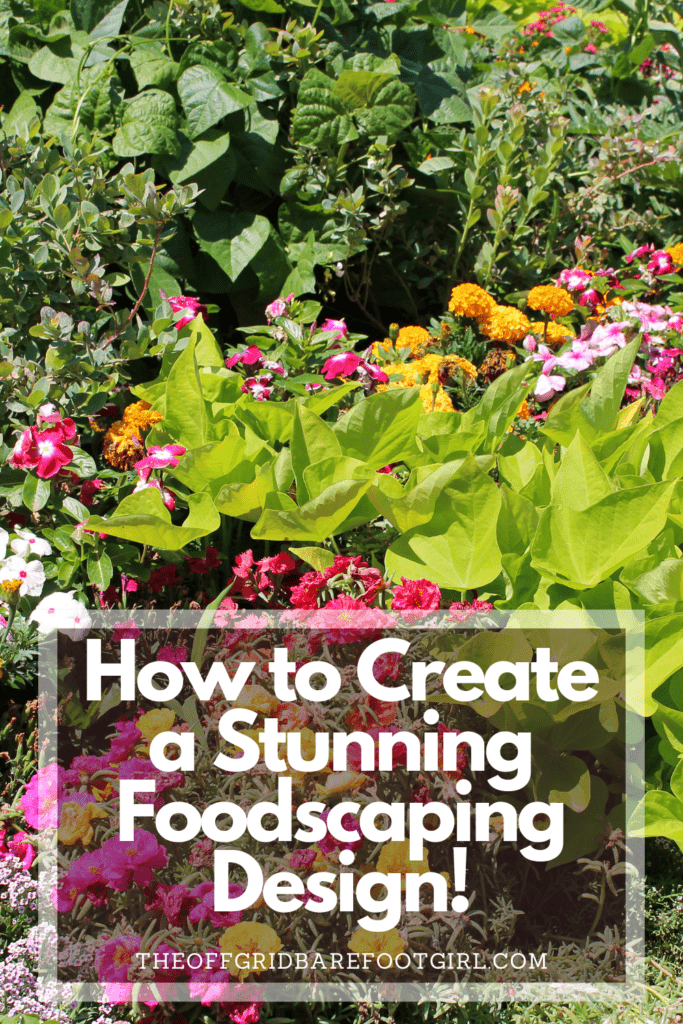
Frequently Asked Questions
1. Can I foodscape in a small urban backyard?
Absolutely, you can definitely foodscape in a small urban backyard! Foodscaping is all about using your available space to grow edible plants and create a functional, productive garden. In a small backyard, vertical gardening techniques like trellises or hanging planters can maximize space and allow you to grow more food in less square footage. You can also choose compact varieties of fruits, vegetables, and herbs that are well-suited for small spaces. Look into container gardening options as well – planting in pots or raised beds can be a great way to cultivate a variety of crops even if you have limited ground space.
2. How much time and effort is required to maintain a foodscaping garden?
Maintaining a foodscaping garden can require varying amounts of time and effort depending on the size and complexity of the garden. In general, a foodscaping garden requires regular watering, weeding, pruning, and harvesting to ensure healthy plant growth and abundant produce. This could mean spending a few hours each week tending to your plants, especially during the growing season. Additionally, you may need to invest time in researching proper care techniques for the different types of fruits and vegetables you choose to grow. However, once your foodscaping garden is established and flourishing, the maintenance tasks become routine and enjoyable for many people who find peace and satisfaction in nurturing their own organic produce.
3. Are there specific plants that are better suited for foodscaping?
When it comes to foodscaping, there are definitely some plants that are better suited for the job than others. A great starting point is to choose edible plants that are both aesthetically pleasing and low maintenance. Herbs like basil, rosemary, and mint are excellent choices, as they not only add flavor to your dishes, but also provide a nice pop of green in your garden. Fruits such as strawberries, blueberries, and raspberry bushes can also be a wonderful addition to your foodscaping project, offering both delicious treats and beautiful blooms. Vegetables like tomatoes, peppers, and lettuce are easy to grow and can be incorporated seamlessly into any landscape design.
4. How can I incorporate sustainable practices like composting into my foodscaping design?
To incorporate sustainable practices like composting into your foodscaping design, you can start by designating a specific area in your garden for a compost bin or pile. This will allow you to easily add kitchen scraps, yard waste, and other organic materials to decompose and create nutrient-rich soil for your plants. In addition, consider using companion planting techniques with plants that help each other grow and deter pests naturally, reducing the need for harmful chemicals. Rainwater harvesting systems can also be implemented to conserve water usage in your garden.
Summary
I hope this has inspired you to create your very own foodscape garden. Start small and add new plants each season to your foodscape garden beds. Tuck in spinach and kale plants along walkways where you can easily harvest them as needed. Plant some tomato plants inside some tall ornamentals to hide them along the sides of your house. Nobody will know that you are growing tomatoes around your house.
If you were encouraged by this post, I invite you to check out my FREE Printables Page for fun free printables, planners, and charts.
ENTER MY FREE Printables Page HERE
Here are some more of my gardening inspiration posts to check out!
Gardening Topics!
The Best Drought-Tolerant Plants to Include in Your Survival Garden!
How to DIY a Milk Jug Drip Irrigation System!
Why Cedar Mulch Is The Perfect Natural Weed Barrier
Onions: How to Grow Onions for Storage
Peas: How to Grow Garden Peas for a Bumper Crop
Carrots: How to Grow Carrots for a Bountiful Harvest
Prep Your Garden for Spring Planting with These Expert Tips!
How to Grow a Prepper Garden to Survive and Thrive
The Best Garden Tools You Need for a Productive Season
Fastest Growing Vegetables for Your Survival Garden
How to Grow Marigolds As Pest Control In Your Vegetable Garden
Must-Have Tools for a Successful Balcony Vegetable Garden
How to Effectively Combat Powdery Mildew in Your Garden
The Best Tips for Organic Gardening
How to Release Ladybugs In Your Garden for Organic Pest Control
The Best Garden Snail Control Strategies
The Best Spring Vegetables to Grow in Your Garden
Seed Starter Mix: How To Make Your Organic Seed Starter Mix At Home
How to Grow a Productive Canning Garden
How to Plant and Grow a Salsa Garden
Easiest Heirloom Vegetable Seeds to Grow Now
How to Use the Hand Twist Claw Tiller: Tackling Tough Soil
More Fun Gardening Posts to Check Out!
Planning Your Garden: How to Plan a Vegetable Garden: Expert Green Thumb Tips!
Winterizing the Garden: How to Winterize Your Vegetable Garden: Step-by-Step Checklist
Mulching the Garden: How to Make Leaf Litter Mulch
Grow a Pumpkin Patch: How to Grow a Pumpkin Patch in Your Backyard
How to Grow a Fall Garden: 9 Best Fall Crops
How to Start Composting for the Garden: A Step-by-Step Guide
The Ultimate Guide to Composting in Your Suburban Backyard
Why I Built A Survival Garden in My Backyard
Blessings,
The Off Grid Barefoot Girl

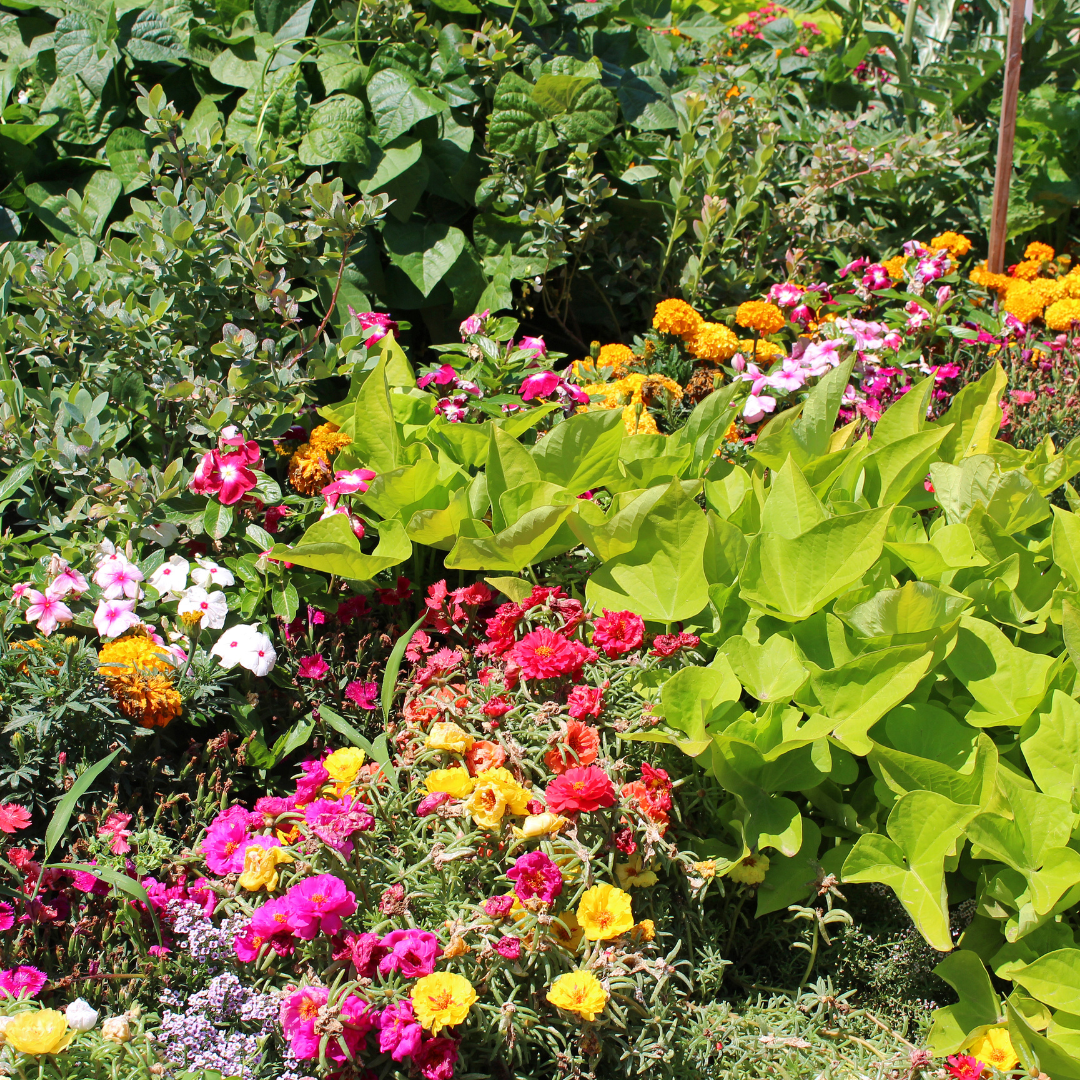
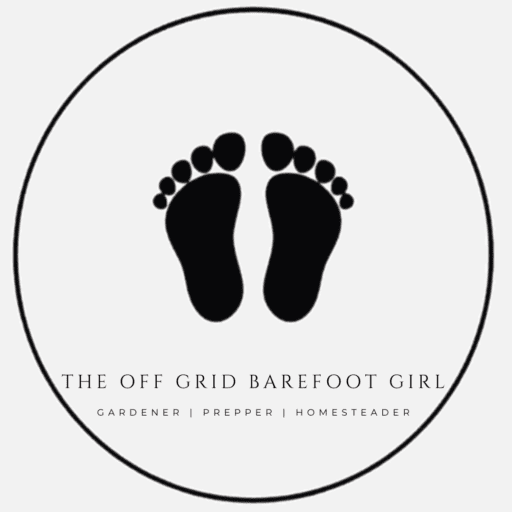




Never thought of gardening in this way. This is a cool concept for suburban gardeners.
Awesome idea!